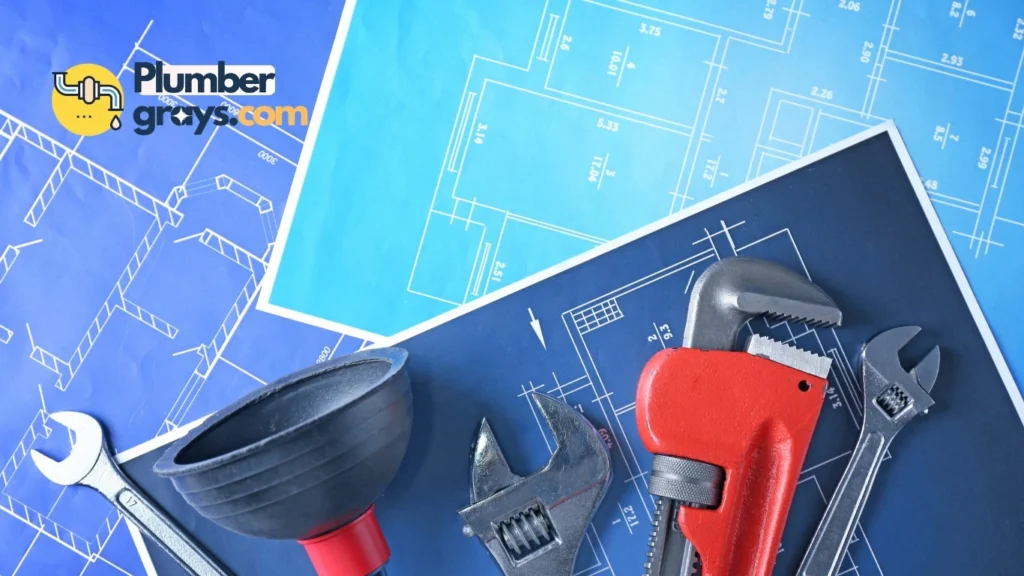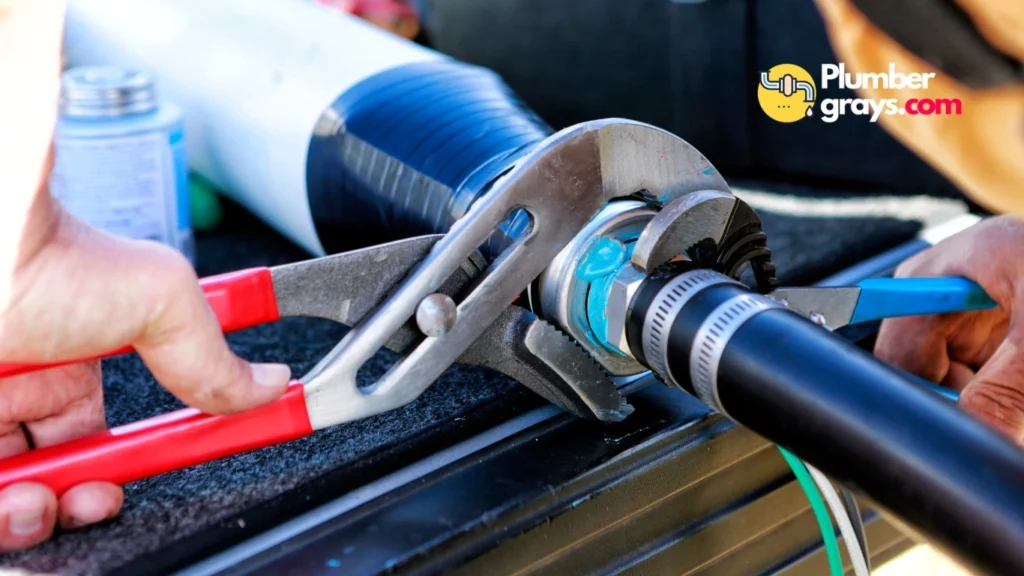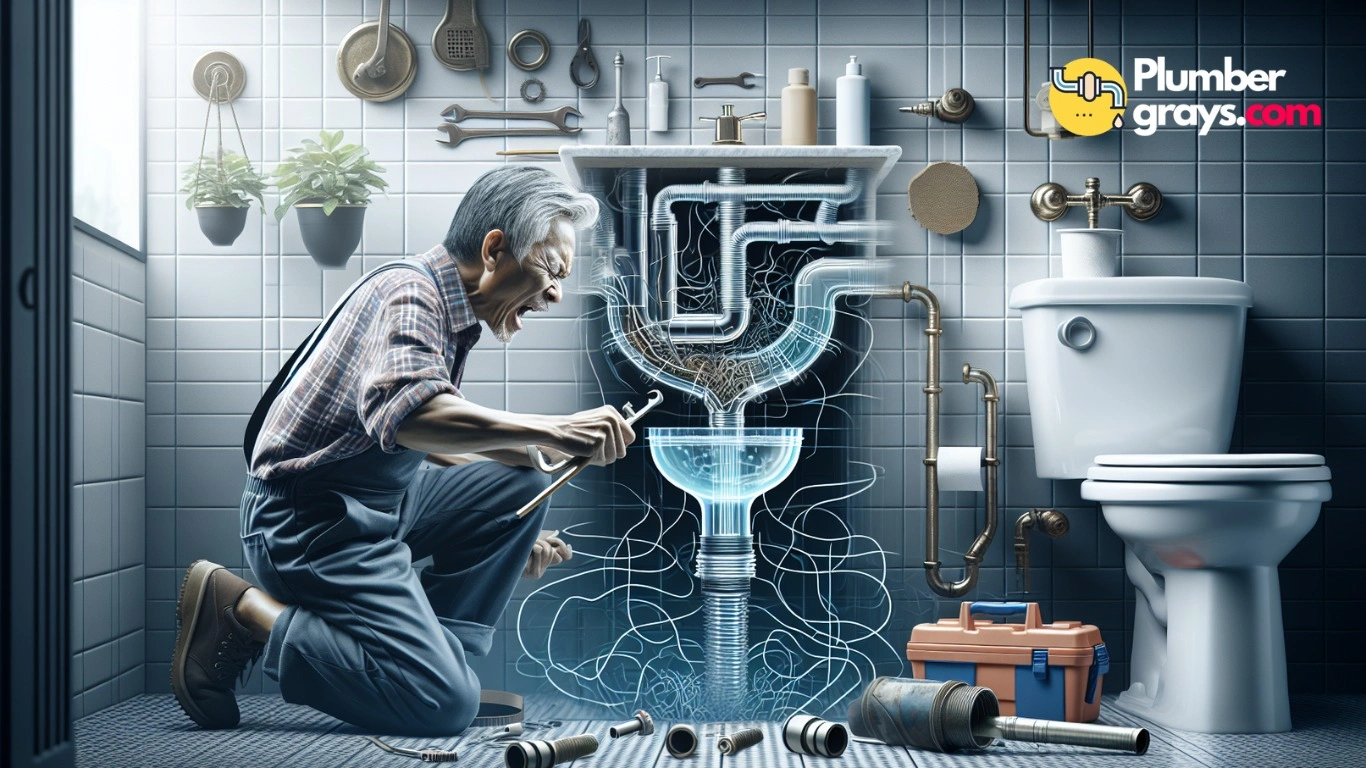In my experience with drum trap plumbing, these components are essential in preventing sewer gases from backing up into homes but are known to be relics of the past. Originally, drum traps played a crucial role in residential plumbing, especially in the Minneapolis metro area, due to their ability to prevent water siphoning and facilitate the retrieval of lost items. However, their design has made them less than ideal for cleaning and maintenance, leading to common issues such as clogs and corrosion over time.
As a plumbing professional, I’ve seen how modern plumbing codes no longer recommend drum traps in new constructions, instead advocating for more efficient alternatives. That’s why in this article, I will guide you through the problems associated with drum traps, explore their history, and discuss the modern solutions that can enhance the customer experience with less risk of leakage and fewer plumbing repairs.
Understanding Drum Traps
Drum traps have been a staple in older homes, particularly in the Minneapolis and Saint Paul areas, where they were once the go-to solution for plumbing. Here’s a breakdown of what they are and how they function:
- Structure and Function:
- Design: Featuring a vertical pipe connected to a horizontal one, drum traps create a water seal by trapping a larger volume of water than their successors, the P-traps.
- Shape: Resembling a drum, about the size of a two-pound coffee can, they sit below the floor level, often making them tricky to access for maintenance.
- Purpose: Their main role is to prevent sewer gases from entering living spaces, a job they perform by ensuring the inlet is lower than the outlet to maintain a static water level above which gases are trapped.
- Historical Usage:
- Popularity: Drum traps were commonly installed up until around 1950, seen as advantageous due to their ability to prevent water siphoning and their ease of opening for cleaning.
- Material: Typically made of iron or lead, these traps are connected directly to the drain pipe from a tub or sink, and filled with water to create a seal before exiting through a higher drain pipe.
- Challenges and Maintenance:
- Clogging: Over time, debris and sediment can build up, leading to clogs and slow drainage, a common issue with drum traps.
- Access: The challenge of cleaning these traps stems from their typical placement below the floor, with lids that are often difficult to remove without causing damage or corrosion.
- Sealing: If the cover is accessible, it’s imperative to ensure a tight seal after maintenance to prevent the escape of sewer gases into the home.
Despite their historical prevalence, drum traps are no longer the standard in modern plumbing due to their propensity for clogging and the difficulty in cleaning them. Today, P-traps and S-traps, which are shaped like their respective letters, have taken over due to their superior functionality and ease of maintenance. If you’re dealing with a drum trap in your home, it’s vital to consult a professional plumber to explore the option of replacing it with a more contemporary trap to ensure a seamless and more efficient plumbing system.
The Historical Popularity of Drum Traps

In the early days of residential plumbing, before the widespread use of modern plastic traps, drum traps were a familiar sight in many homes. Their design was simple yet effective, serving two main purposes in the plumbing systems of the past:
- Preventing Sewer Gases: A primary function of drum traps was to stop unpleasant and potentially dangerous sewer gases from entering buildings. By maintaining a water seal within the trap, these gases were effectively blocked from rising up through the pipes and into the living areas of the home.
- Wastewater Flow: Besides blocking gases, drum traps allowed wastewater to exit the home smoothly. The design ensured that while water could flow out, the gases remained contained.
The popularity of drum traps during their time can be attributed to a couple of key factors:
- Sewer Gas Prevention: Homeowners valued the peace of mind that came with knowing their plumbing system was designed to keep sewer gases where they belonged—out of the house. The efficiency of drum traps in providing this protection made them a go-to solution for many.
- Ease of Cleaning: Unlike some modern plumbing components that can be challenging to service, drum traps were known for being easier to open for cleaning. This ease of maintenance was a significant selling point, as it allowed homeowners to keep their plumbing systems functioning properly without excessive hassle.
Reflecting on my own experiences in the plumbing industry, I can appreciate why these features would have been appealing to homeowners and builders alike during the era when drum traps were in vogue. The simplicity of their operation and the reliability they offered made drum traps a staple in the plumbing systems of the past.
Why Drum Traps Fell Out of Favor
Drum traps have been phased out of modern plumbing systems for a variety of reasons:
- Clogging Issues: One of the main reasons for the fall out of favor is their tendency to clog. Unlike modern P-traps, which are self-scouring, drum traps do not allow for the easy passage of debris. This means they are more prone to getting clogged with hair, soap, and other debris, which can lead to slow drainage and complete blockages.
- Maintenance Challenges: Cleaning drum traps can be a serious chore due to their design and location. Often placed below floor level, accessing them for maintenance is a difficult task. In addition, the lids of drum traps can rust in place, making them even harder to open and clean out when they do clog.
- Corrosion and Leaks: Over time, drum traps can corrode, which not only impedes their functionality but can also lead to leaks and damage to the surrounding plumbing system. In some cases, the corrosion is so severe that the traps fail to create a proper seal, allowing sewer gases and odors to escape into the home.
- Code Compliance: Modern plumbing codes have been updated to reflect the inefficiencies and unhygienic nature of drum traps. As a result, they are no longer allowed in new construction or replacement plumbing systems in many regions, including Minnesota, except under special circumstances.
- Health Risks: The difficulty in cleaning drum traps properly can lead to the accumulation of waste and bacteria over time. This poses health risks, as the traps can turn into miniature cesspools, causing unpleasant odors in bathrooms.
- Obsolete Technology: Drum traps are considered outdated compared to the more efficient and hygienic components used in modern plumbing systems. They have been replaced by P-traps and S-traps, which are not only more reliable but also meet the self-scouring requirements of modern plumbing codes.
In light of these disadvantages, many homeowners and professionals in the plumbing industry have transitioned away from drum traps, opting for more reliable and easier-to-maintain alternatives that comply with current codes and standards.
Common Issues Associated with Drum Traps
In my dealings with drum trap plumbing, I’ve encountered a range of common issues that can be quite a headache for homeowners:
- Clogging: Unlike P-traps that are designed to self-scour, drum traps can accumulate solids at the bottom, leading to persistent clogs. This is exacerbated by the fact that debris, including hair and other materials, tends to collect at the bottom of the drum trap cylinder, creating blockages that disrupt water flow and can cause the trap to wick water away rather than siphon it properly.
- Maintenance Difficulties: When it comes to cleaning, drum traps present a unique challenge due to their design and often inconvenient location. The task is further complicated because drum traps cannot be snaked, which means that clearing clogs often requires more invasive methods. If a drum trap becomes clogged, a thorough cleaning may be necessary to address and prevent unpleasant odors.
- Corrosion and Leakage: Over time, the materials of drum traps, which are not as robust as modern plumbing materials, can corrode. This corrosion can cause leaks and damage to the surrounding plumbing system. In severe cases, the corrosion can be so extensive that the trap can no longer form an effective seal, allowing sewer gases and odors to permeate the home.
While these issues are significant, it’s worth noting that with diligent maintenance, drum traps can have a long service life. However, due to their propensity for damage, inefficiency, and the challenges associated with cleaning or removing them, many homeowners and professionals are opting to replace drum traps with more modern alternatives.
Modern Alternatives to Drum Traps

In my line of work, I’ve often advised homeowners to switch out any existing drum traps for modern alternatives to mitigate clogging and other drain-related issues. Here’s a step-by-step guide on how I usually approach this upgrade:
- Selecting the Replacement:
- Opt for modern P-traps as they are self-scouring, significantly reducing the likelihood of sediment build-up which is a common problem with drum traps.
- P-traps, aptly named for their ‘P’ shape, not only prevent sewer gases from entering the building but also facilitate easier cleaning and maintenance.
- Material and Preparation:
- When transitioning from old plumbing systems, I recommend using PVC material for its durability and ability to create a watertight seal, especially when connecting to older fittings.
- For sealing the connections, I find that pipe dope with a single strand wicking creates a more reliable seal compared to Teflon tape, particularly in older threads.
- Before installation, it’s crucial to remove any cuttings to avoid hair and other debris from getting trapped, and to clean the new fittings to ensure the correct angles for a proper fit.
- The Installation Process:
- Marking witness marks on the fittings and pipes is a step I never skip. It ensures that everything aligns properly during the gluing process.
- Gluing all connections simultaneously is important to avoid any misalignment that could lead to future problems.
- I always remind homeowners that while replacing drum traps with P-traps is recommended for easier maintenance and more efficient self-cleaning, it’s essential to consider the necessity of the replacement and the strictness of code adherence in their area.
In my toolkit, I keep all the right materials ready for such jobs, as familiarity with common layouts is key for a smooth transition from drum traps to P-traps. Typically, the replacement process takes between 60 to 90 minutes, with costs ranging from $20 to $30, making it a cost-effective solution for long-term plumbing health.
Converting from Drum Trap to P-Trap
When I come across a drum trap in a home, especially during other plumbing work, I consider whether it’s time for an upgrade to a P-trap. Here’s how I tackle the conversion process:
- Assessment: Before jumping into replacing the drum trap, I assess the situation. If the drum trap is accessible and not causing significant issues, a thorough cleaning might be all that’s needed to keep it functioning and odor-free. However, if it’s old, clogged, and clearly a relic of the past, I recommend upgrading to a PVC P-trap for its self-scouring benefits.
- Removal of the Drum Trap: Using a reciprocating saw and some elbow grease, I carefully removed the old iron drum trap. It’s important to have the right tools on hand, like pipe wrenches and pliers, to unthread the drum trap without damaging the surrounding pipes.
- Installation of the P-Trap: Here’s the step-by-step process I follow:
- Replace the threaded adapter from the drum trap with a male PVC adapter, ensuring a watertight seal with the help of pipe dope and single-strand wicking.
- Dry fit the new PVC P-trap and pipes, checking that all angles are correct for a smooth flow.
- Clean and deburr the pipes, then glue the pieces together, aligning them carefully to maintain the flow direction.
- Install any necessary vent lines using a wye right after the P-trap, ensuring proper placement for optimal function.
- Final Touches: After the installation, I double-check all connections for leaks. Using primer and all-purpose cement for PVC pipes helps to secure the connections, and it’s crucial to allow the joints to set before running water through the system. Ensuring everything is tight and secured gives peace of mind that the new P-trap will serve the household well without the issues that plagued the old drum trap.
Throughout the process, I keep in mind that while replacing a drum trap with a P-trap is not overly difficult, it requires basic plumbing skills and the right tools. A video tutorial can be a helpful guide for those who prefer a visual walkthrough of the replacement process. The result is a more modern, efficient drainage system that aligns with current plumbing standards and homeowner expectations.
Conclusion
Through an exploration of drum traps, their issues, and contemporary alternatives, this article has offered an in-depth look at a plumbing relic seldom encountered in today’s modern homes. We have examined the historical context that originally favored drum traps, the maintenance challenges they pose, and the rationale for their gradual obsolescence. The shift towards more efficient P-traps aligns with a development in plumbing practices that prioritizes ease of maintenance and adherence to current codes and standards.
Acknowledging the journey from the drum trap to the P-trap reflects a broader commitment to innovation and improved homeowner experience in plumbing. For those contemplating an upgrade or seeking to enhance their plumbing systems, the transition to a more reliable and code-compliant solution is well within reach. Explore your options and consider reaching out to professionals for guidance so your home’s plumbing can function seamlessly for years to come.
FAQs
What are the disadvantages of using drum traps in plumbing?
Drum traps tend to retain a significant amount of water and solids, which may not be effectively flushed through the system. This can result in the accumulation of debris at the bottom of the trap, leading to frequent clogging. Additionally, drum traps are notoriously challenging to clean, which compounds the issue of maintaining a clear drainage system.
What steps should be taken to unclog a drum trap?
To unclog a drum trap, you should cautiously open the trap, being alert for any water that may seep out from the threads. Employ a manual or powered auger by inserting it into the drum trap. If the trap is full, navigate the auger away from the bathtub and towards the main drain line. Move the auger back and forth to clear the clog effectively.
Why are drum traps no longer permitted in modern plumbing?
Drum traps may become severely corroded over time, compromising their ability to maintain an effective seal. This can lead to the escape of gases and unpleasant odors. Modern plumbing codes have recognized these issues and, as a result, drum traps are not allowed in new construction or as replacements in existing plumbing systems due to their potential to violate these standards.
What are common issues associated with plumbing traps, specifically P-traps?
P-traps can develop leaks, which may initially seem minor but can escalate into more significant problems if not addressed promptly. These leaks can lead to clogged drains and allow unpleasant odors to permeate your home. Additionally, smelly P-traps can occur when sewer gases back up into your house through the drains, indicating a need for maintenance or repair.


Comments are closed